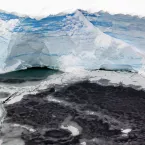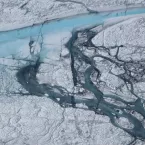Our Research
As climate changes, how do Earth's frozen areas affect our planet and impact society?
In this section
Related News & Stories
Filter by:
Analysis - Sea Ice Today
As the sun dips lower on the horizon, air temperatures over the central Arctic Ocean are dropping to near freezing conditions.
Analysis - Sea Ice Today
The seasonal decline in Arctic sea ice extent from mid-July onward has proceeded at a near average pace. Extent is currently well below average, but above that observed for recent years.

Analysis - Ice Sheets Today
A moderate melt surge swept across northern Greenland and then encompassed much of the ice sheet perimeter in mid-July. Overall, the 2022 summer season in Greenland continues at a modest pace relative to the past few years.

Spotlight
Welcome to the new NSIDC.org! Our website now offers an even more intuitive and efficient interface to allow users from all different backgrounds to discover and analyze over 1400 data sets and gain expert-verified knowledge about the cryosphere.

Feature Story
From 2020 to 2024, the Arctic Rain on Snow Study (AROSS) at the National Snow and Ice Data Center (NSIDC) hopes to quantify and better understand rain on snow and its impacts.

News Release
This fall, the University of Colorado (CU) Boulder will host a Greenland natural science data workshop to bring together members of the data and research community to share plans, discuss open opportunities and chart necessary developments in Greenland-focused data and tools to support the next decade of science in service to communities in Greenland and across the globe.